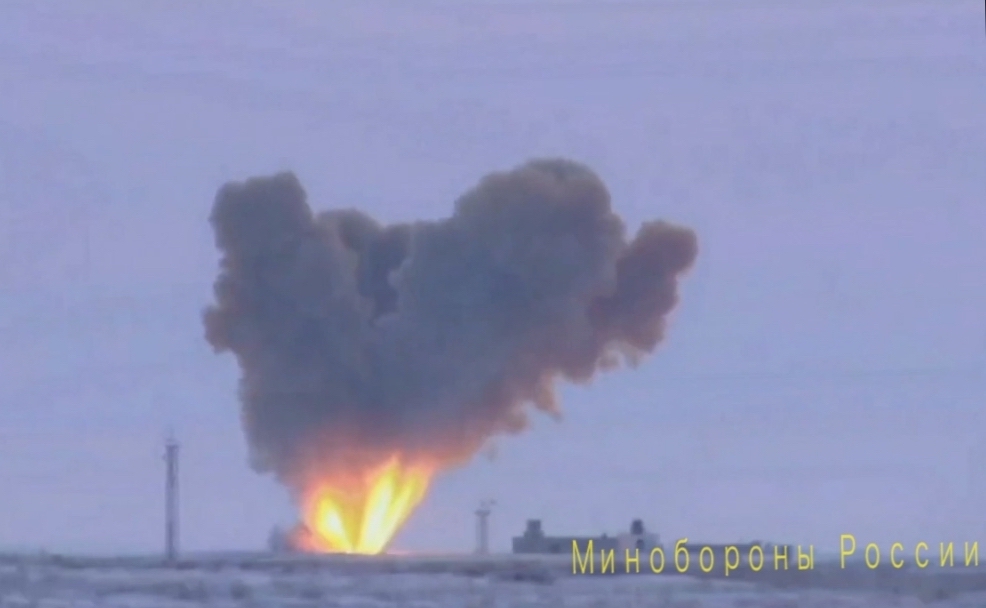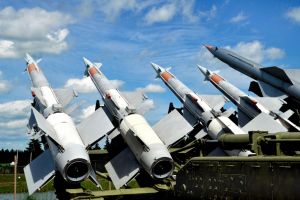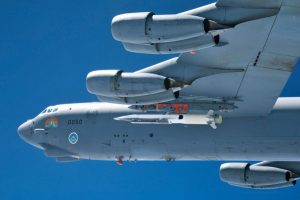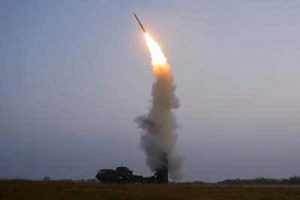Hypersonic missiles travel at five times the speed of sound, can destroy an aircraft carrier even without a warhead, and cannot be tracked
China is way ahead of everyone else in their development, Russia has them in service and the US currently has no way to shoot them down.
That’s why Air Force General John E Hyten told the Washington Post in February that hypersonic missiles are “the threat of the future.”
“That’s not just because they can fly so fast but also because their trajectory is so unpredictable,” he said. “When tracking a ballistic missile, US surveillance systems can predict soon after launch where it will land. But a low-flying, hypersonic cruise missile can zig and zag, avoiding detection and targeting and posing an eerie, perhaps unstoppable danger.”
As tensions between China and the US rise, so Washington and the rest of the world are rushing to catch up with China and Russia. Here’s the state of play:
What is a Hypersonic Missile?
Hypersonic weapons come in two forms. Hypersonic cruise missiles (HCM), which are powered by high-performance, air-breathing engines known as scramjets. A hypersonic cruise missile is boosted by a rocket to hypersonic speed and then uses an air-breathing engine called a scramjet to sustain that speed.
Then there are hypersonic glide vehicles (HGV), which comprise a manoeuvrable glide vehicle launched on a ballistic missile or rocket booster. A hypersonic glide vehicle is boosted on a rocket to high altitude and then glides to its target, manoeuvring along the way.
Both types of weapons are notionally preprogrammed to fly to a specified target.
Also on AF: China Outpaces US Tenfold on Hypersonic Missiles: US General
How Far Behind is US in Hypersonic Missiles?
According to ArmsControl.org, the Pentagon is marching ahead with the rapid development and deployment of hypersonic weapon capabilities across its services, despite some setbacks in testing.
Members of Congress and defence officials have claimed that Washington has fallen behind Moscow and Beijing and have endorsed efforts to accelerate US hypersonic weapons development.
The Air Force has requested $162 million for the research and development of the Air-Launched Rapid Response Weapon (ARRW) system, one of the first hypersonic weapons scheduled to enter the field, in fiscal year 2023.
The Navy has two hypersonic weapons programs underway – the Conventional Prompt Strike system and the Hypersonic Air-Launched Offensive Anti-Surface Warfare system. Both are slated to enter service in 2028.
Meanwhile, the Army is working on the Long-Range Hypersonic Weapon programme, while the Defense Advanced Research Projects Agency (DARPA) is seeking funding for its multiple hypersonic weapons R&D programmes – Glide Breaker, Tactical Boost Glide and MoHAWC.
Chinese Military Ahead in New Arms Race
All of the latter are still in their development and testing phase with nothing entering service, which leaves China well ahead in this new arms race.
However, the Missile Defense Agency (MDA) has requested $226 million for hypersonic missile defence activities that includes a system to defeat a hypersonic missile in its glide phase.
This involves the development of an interceptor and updates to the Aegis system to incorporate it, ArmsControl.org reported.
The Hypersonic and Ballistic Tracking Space Sensor (HBTSS) programme is intended to be a new constellation of satellites for tracking hypersonic missiles in flight and guiding the proposed interceptor to its target.
In other words, shooting down a hypersonic, with a hypersonic. But first, you have to see it, to hit it.
China Hypersonic Missile Circles Globe
But perhaps China’s greatest achievement, which occurred last August, was the successful test of a nuclear capable hypersonic missile that circled the globe – shocking US officials and the world’s scientific community, according to the Financial Times report.
“We have no idea how they did this,” a US official admitted.
The missile missed its target by about two-dozen miles, the FT reported, but the test showed that China had made astounding progress on hypersonic weapons and was far more advanced than US officials realised.
Concerns over the Chinese military’s nuclear capabilities comes as Beijing continues to build up its conventional military forces and engages in increasingly assertive military activity near Taiwan.
Tensions between the US and China have risen as the Biden administration has taken a tough tack on Beijing, which has accused Washington of being overly hostile.
China also accuses the US, UK, and Australia of being a threatening “Anglo-Saxon clique” after they said they would cooperate in developing hypersonic weapons and electronic warfare capabilities.
Meanwhile, the Chinese military now boasts a mid-range hypersonic boost-glide vehicle for the recently developed Dongfeng-17 (DF-17), which it openly displayed at a Beijing military parade in October 2019.
According to SOFREP.com, this medium-range ballistic missile uses the DF-ZF HGV, which gives China an upper hand in terms of trajectory, as it has a range of 2,500km.
Russia Hypersonics in Ukraine
The Russians have a similar glide vehicle, the Avangard, pictured below, which is capable of an astonishing Mach 27, if the claims are true.
After an apparent test, a beaming Russian President Vladimir Putin called Avangard “the perfect New Year’s gift for the country.”
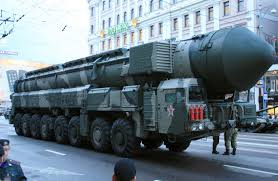
Russia also became the first nation to use new hypersonic weapons in warfare with strikes featuring Kinzhal air-launched ballistic missiles against two locations in Ukraine in March.
India’s Hypersonic Weapons R&D With Russia
Other nations are chasing the trio of leaders – China, Russia and the US – or teaming up with them.
India is collaborating with Russia on a Mach 7 HCM. France intends to field an HCM by 2022 and Japan is aiming for an HGV in 2026.
“National pride is at stake,” Iain Boyd, an aerospace engineer at the University of Colorado, Boulder, told the College of Applied Science. “It’s a race to the moon, sort of thing.”
- By Dave Makichuk
Read more:
US Reveals Successful Tests of Hypersonic Missiles
China Slams AUKUS Hypersonic Missile Pact as Asian NATO
Russia’s Ukraine Hypersonic Missile Claim Misses The Mark




